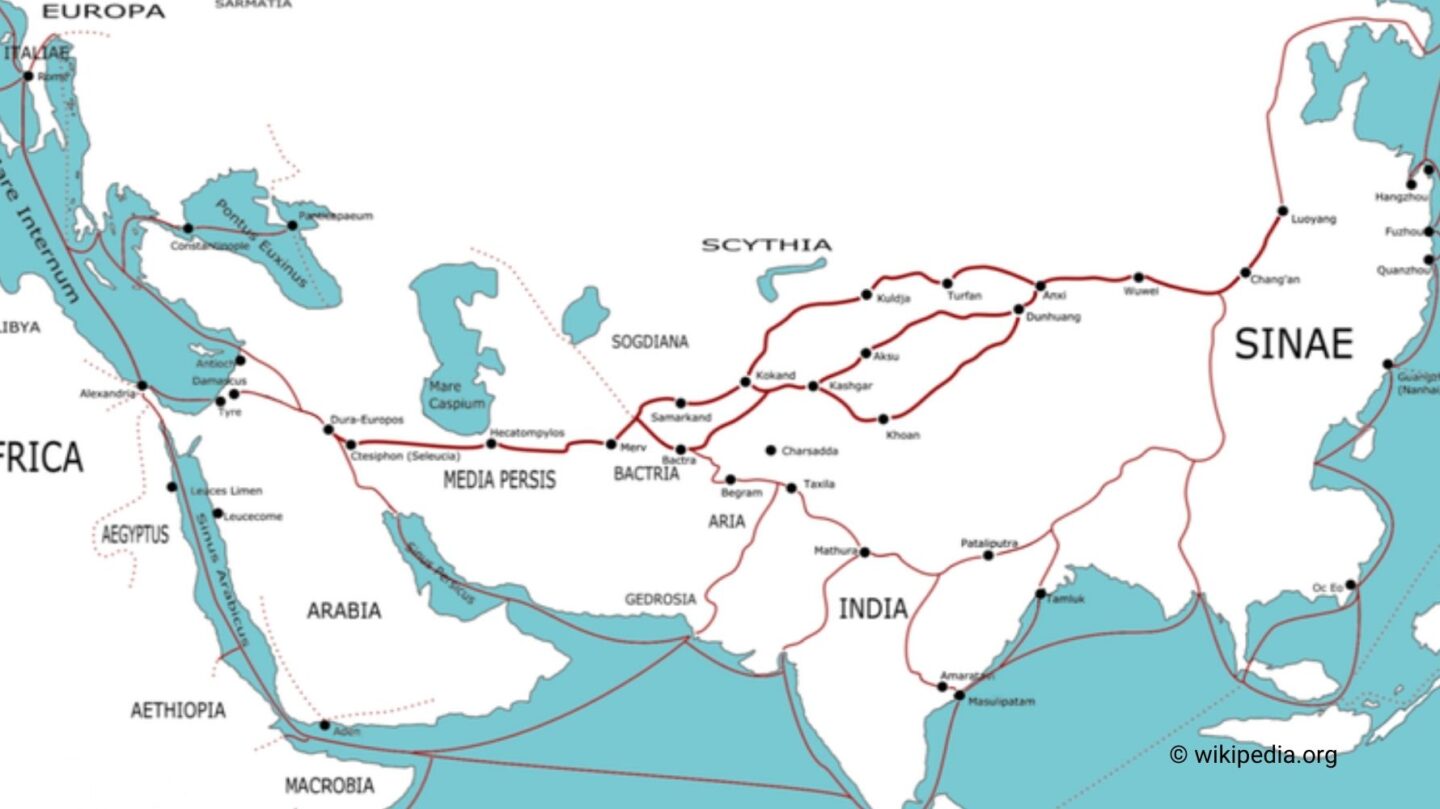The Birth of a Legendary Trade Route
The Silk Road, one of history’s most famous trade networks, was not a single road but a vast network of interconnected routes that spanned over 7,000 kilometers. It connected the East and West, stretching from China to the Mediterranean and beyond. Established during the Han Dynasty around 130 BCE, the Silk Road facilitated the exchange of goods, ideas, and cultures for over 1,500 years.
Named for the lucrative silk trade that originated in China, this route became a channel for much more than goods—it linked civilizations, fostering interactions that shaped the course of history.
The Goods That Traveled the Silk Road
While silk was the most iconic commodity traded along the Silk Road, it was far from the only one. Chinese merchants exported porcelain, paper, spices, and tea, while goods such as glassware, wool, ivory, and precious stones flowed eastward from the Roman Empire, Persia, and India.
In addition to luxury items, the Silk Road facilitated the movement of everyday goods that supported local economies. Horses, salt, and grains were essential items exchanged between regions. The diversity of goods carried along this route demonstrates the interconnectedness of ancient economies.
The Exchange of Cultures and Ideas
The Silk Road was more than a trade route—it was a bridge between civilizations. Alongside goods, it carried ideas, religions, technologies, and art. For example:
- Religion: Buddhism spread from India to China, Korea, and Japan via the Silk Road. Christian missionaries and Islamic traders also traveled the route, introducing their faiths to new regions.
- Technology: Innovations such as papermaking and gunpowder, developed in China, reached the Middle East and Europe through the Silk Road. Similarly, techniques for glassmaking and metalworking moved eastward.
- Art and Culture: Artistic styles blended as traders shared influences. Greek and Roman motifs appeared in Central Asian sculptures, while Chinese pottery adopted Persian and Indian designs.
This cultural exchange transformed the civilizations connected by the Silk Road, enriching their traditions and knowledge.
The Role of the Silk Road in Global Politics
The Silk Road was also a stage for diplomacy and political interaction. Empires along the route, such as the Han, Persian, and Byzantine empires, used the network to establish alliances, negotiate treaties, and display their wealth and power.
The stability provided by powerful empires, such as the Pax Mongolica during the Mongol Empire in the 13th and 14th centuries, allowed trade to flourish. The Mongols actively protected merchants, ensuring the safety of caravans traveling across their vast territories.
Challenges and Decline
While the Silk Road brought prosperity, it was not without challenges. Harsh deserts, rugged mountains, and bandit attacks made travel dangerous. Over time, political instability and changing trade dynamics affected its importance.
The rise of maritime trade in the 15th century, driven by European exploration, diminished the significance of overland routes like the Silk Road. By the 16th century, the once-thriving network had largely faded, though its legacy remained.
The Lasting Impact of the Silk Road
The Silk Road’s influence endures in many ways. It laid the foundation for globalization, connecting distant regions and promoting the exchange of ideas and technologies. It also inspired cultural blending, visible in the art, cuisine, and traditions of the regions it linked.
Today, the term “Silk Road” symbolizes global interconnectedness, and its historical routes are celebrated for their role in shaping human history. Efforts to preserve its legacy include UNESCO’s recognition of the Silk Roads as a World Heritage Site.
A Route That Changed the World
The Silk Road was more than a path for traders; it was a conduit for the exchange of goods, ideas, and cultures that transformed civilizations. Its impact resonates through history, reminding us of the power of connection and the shared human desire to explore, innovate, and collaborate. As we continue to study its legacy, the Silk Road stands as a testament to humanity’s ability to create bonds that transcend borders.
